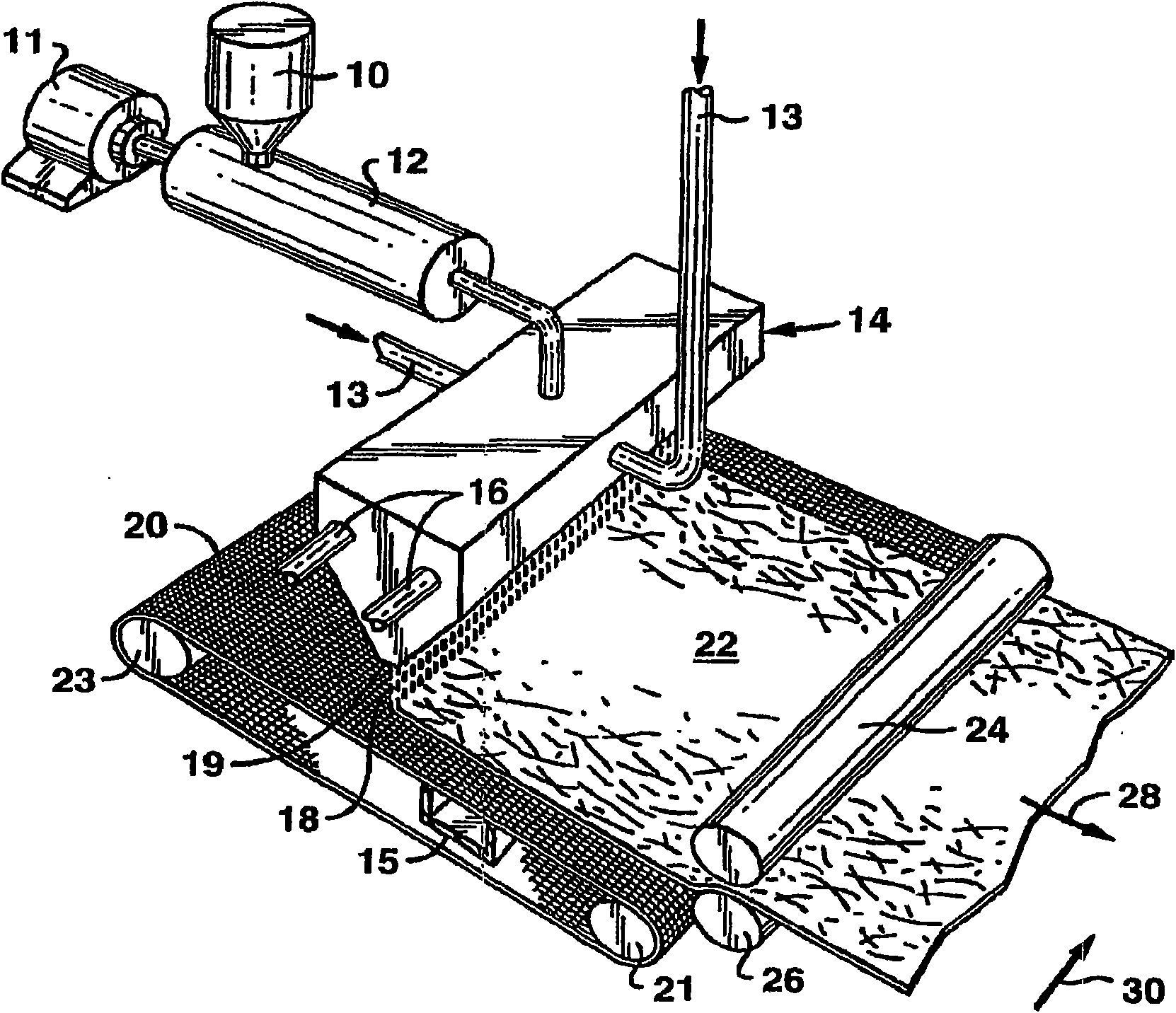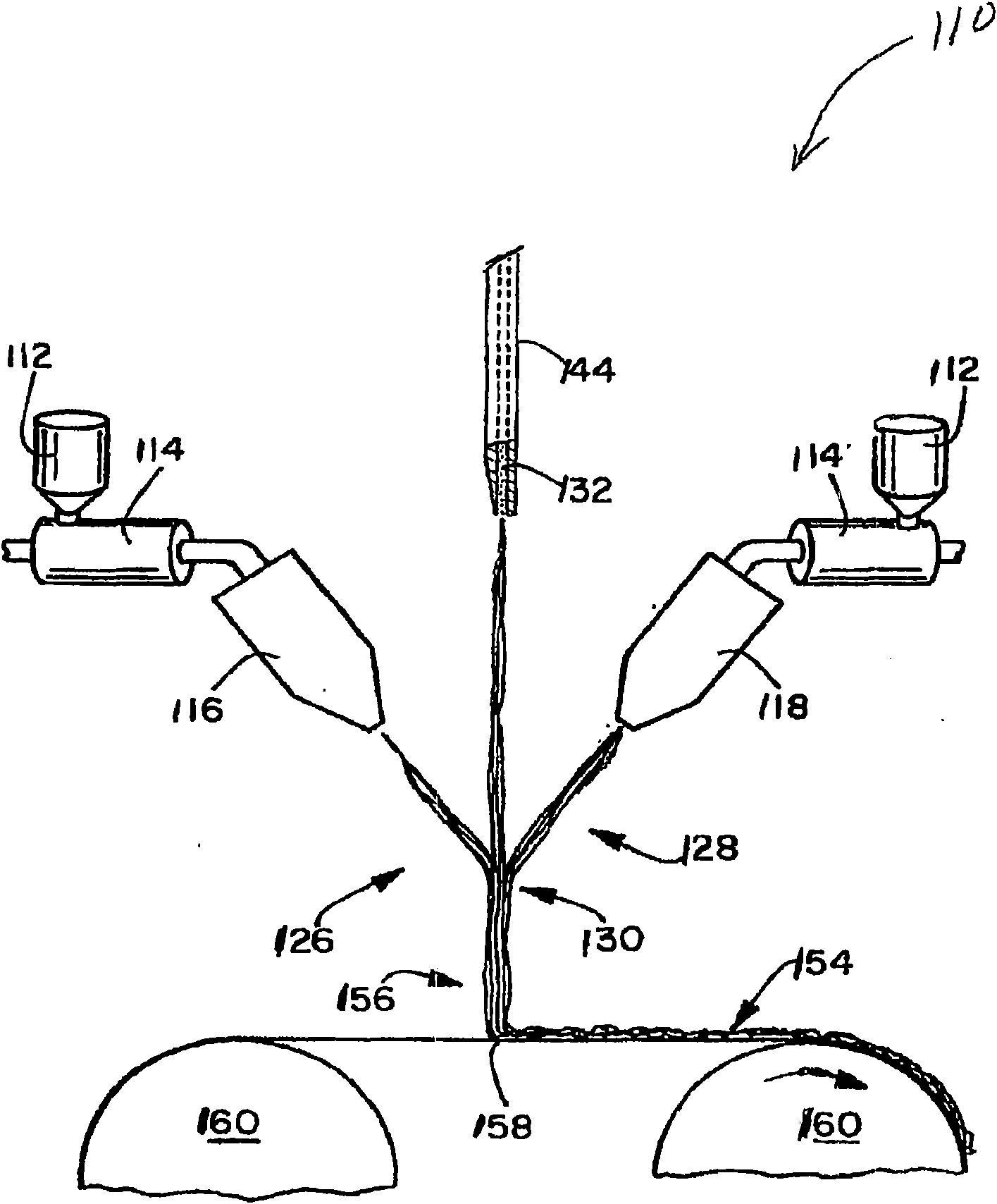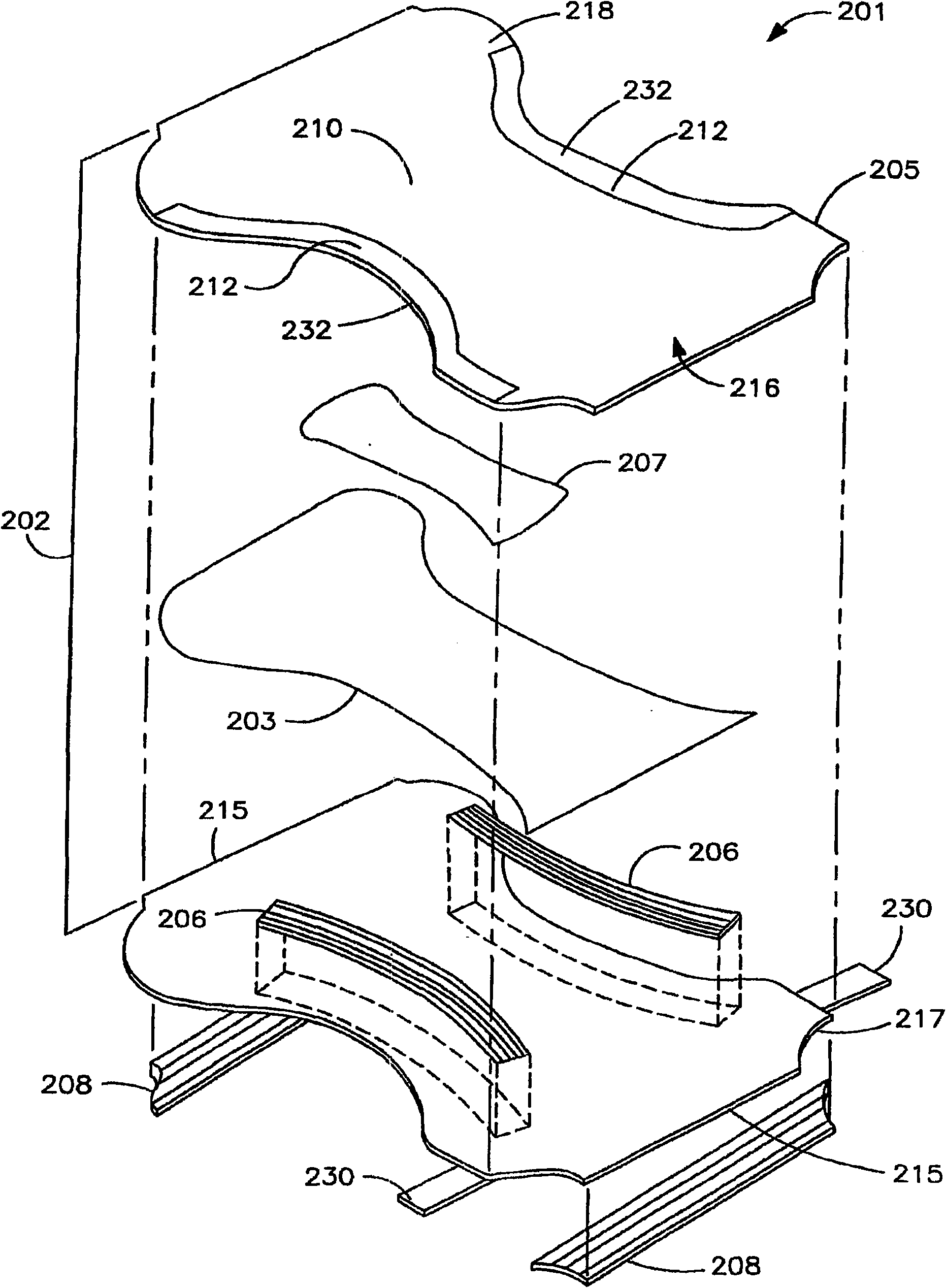Biodegradable polyesters for use in forming fibers
A technology for degrading polymers and polyesters, applied in fiber treatment, fiber chemical characteristics, single-component polyester artificial filaments, etc., can solve problems such as unsuitability
- Summary
- Abstract
- Description
- Claims
- Application Information
AI Technical Summary
Problems solved by technology
Method used
Image
Examples
Embodiment 1
[0118] Two grades of polyester are used, namely, supplied by BASF FBX7011 and Enpol provided by Korea Ire Chemical TM G4560J. The resulting resin was melt-processed using a Wernerer Phleiderer ZSK-30 twin-screw extruder (L / D ratio 44) as described in Table 1 below. The high shear screw arrangement used included a total of 19 low shear conveying elements and a total of 39 high shear kneading elements. After extrusion, the modified polymer strands are cooled on a conveyor belt and pelletized. Both dry and pre-wet resins were used. Moisture content was measured prior to extrusion and the resin was extruded using the melt processing conditions described in Tables 2-3. The final moisture content and final melt flow rate (MFR) of the modified resin after pelletization were determined.
[0119] Table 1: Resin Contents
[0120]
[0121] * PLA 6201D is a polylactic acid resin available from NatureWorks LLC.
[0122] Table 2: Extrusion in Zones 1-7
[0123] ...
Embodiment 2
[0129] Sample 12 of Example 1 was tested to determine the effect of drying on the final melt flow rate (MFR). The drying conditions and test results are reported in Table 4 below.
[0130] Table 4: Properties of Dry Resin
[0131]
[0132] As shown in the table, there was a partial decrease in melt flow rate after drying.
Embodiment 3
[0134] Several of the resins in Example 1 were tested to determine their molecular weight. The results are shown in Table 5 below:
[0135] Table 5: Molecular Weight
[0136] Sample serial number
[0137] As shown above, the modification of the resin results in a number average molecular weight (Mw n ), weight average molecular weight (Mw w ) and Z-average molecular weight (Mw z ) was significantly reduced. For example, the number average molecular weight of Sample 4 decreased from 84,000 to 63,000, and the weight average molecular weight decreased from 135,100 to 100,900.
PUM
| Property | Measurement | Unit |
|---|---|---|
| melting point | aaaaa | aaaaa |
| glass transition temperature | aaaaa | aaaaa |
| length | aaaaa | aaaaa |
Abstract
Description
Claims
Application Information
 Login to View More
Login to View More - R&D
- Intellectual Property
- Life Sciences
- Materials
- Tech Scout
- Unparalleled Data Quality
- Higher Quality Content
- 60% Fewer Hallucinations
Browse by: Latest US Patents, China's latest patents, Technical Efficacy Thesaurus, Application Domain, Technology Topic, Popular Technical Reports.
© 2025 PatSnap. All rights reserved.Legal|Privacy policy|Modern Slavery Act Transparency Statement|Sitemap|About US| Contact US: help@patsnap.com



